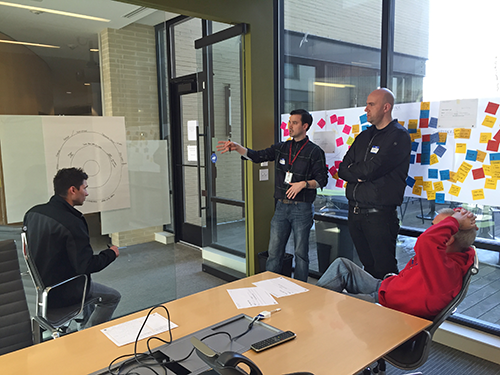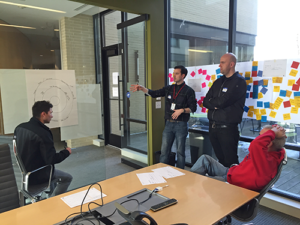
Shorewood & UWM Partner to Bring College-Level Thinking to K-12 Students
Taking creative approaches to solve complex problems or challenges is a critical skill for success in almost any type of environment. The Shorewood School District is preparing students to develop this ability, and a community partnership is giving the effort a big boost.
Shorewood is partnering with the University of Wisconsin-Milwaukee to introduce new opportunities for students to learn about “design thinking” concepts that can be applied to creative problem solving. Building on successful student workshops at Shorewood High School last spring, UWM faculty and the College of Engineering and Applied Science and the Research Foundation facilitated a workshop with Shorewood teachers this January to walk them through design thinking processes and spark ideas about how to introduce these concepts in their classrooms.
“The workshop was one of the more interesting professional development opportunities I’ve been a part of in my six years with the District,” says Jeff Zimpel, who teaches graphic design at SHS. “It made for a challenging and reinvigorating experience. Design thinking is the guiding framework for all my classes – Introductory, Intermediate, and Advanced Graphic Art and Design and Visual Journalism, as well as my own creative practice.”
Design thinking is an approach made famous by the Institute of Design at Stanford University (commonly known as the “D School”). Its variety of applications includes professional design and product development, engineering challenges, business hurdles and social issues.
The design thinking process begins with empathy. This approach allows a deeper understanding of the problem through the eyes of those who are experiencing it firsthand. This can be accomplished through interviews and thoughtful questions that get to the root of the problem, which is often deeper and more nuanced than it appears on the surface.
Once the problem is better defined and understood, the next step is a free-form brainstorming exercise. No rules or limitations confine this ideation activity, allowing problem solvers to step beyond obvious answers and explore a wide range of potential solutions.
 After open brainstorming, a promising potential solution is identified, prototyped and tested. Upon testing, the proposed solution often fails. That’s an important part of the process, because design thinking advocates a rapid, iterative approach that allows its practitioners to quickly pivot and try a new potential solution, then test and refine until a workable solution is achieved.
After open brainstorming, a promising potential solution is identified, prototyped and tested. Upon testing, the proposed solution often fails. That’s an important part of the process, because design thinking advocates a rapid, iterative approach that allows its practitioners to quickly pivot and try a new potential solution, then test and refine until a workable solution is achieved.
“I’m hoping that after walking through [this process], teachers will feel more comfortable taking a first step toward putting students in the driver’s seat of their education,” says Tim Joynt, the District’s director of Curriculum and Instruction. “I was really impressed with our teachers’ participation in the event and can’t wait to see what iterations of design thinking they come up with.”
Shorewood and UWM plan to continue their partnership to give students more creative, innovative and entrepreneurial experiences inside and outside the classroom.
Read the original article here.